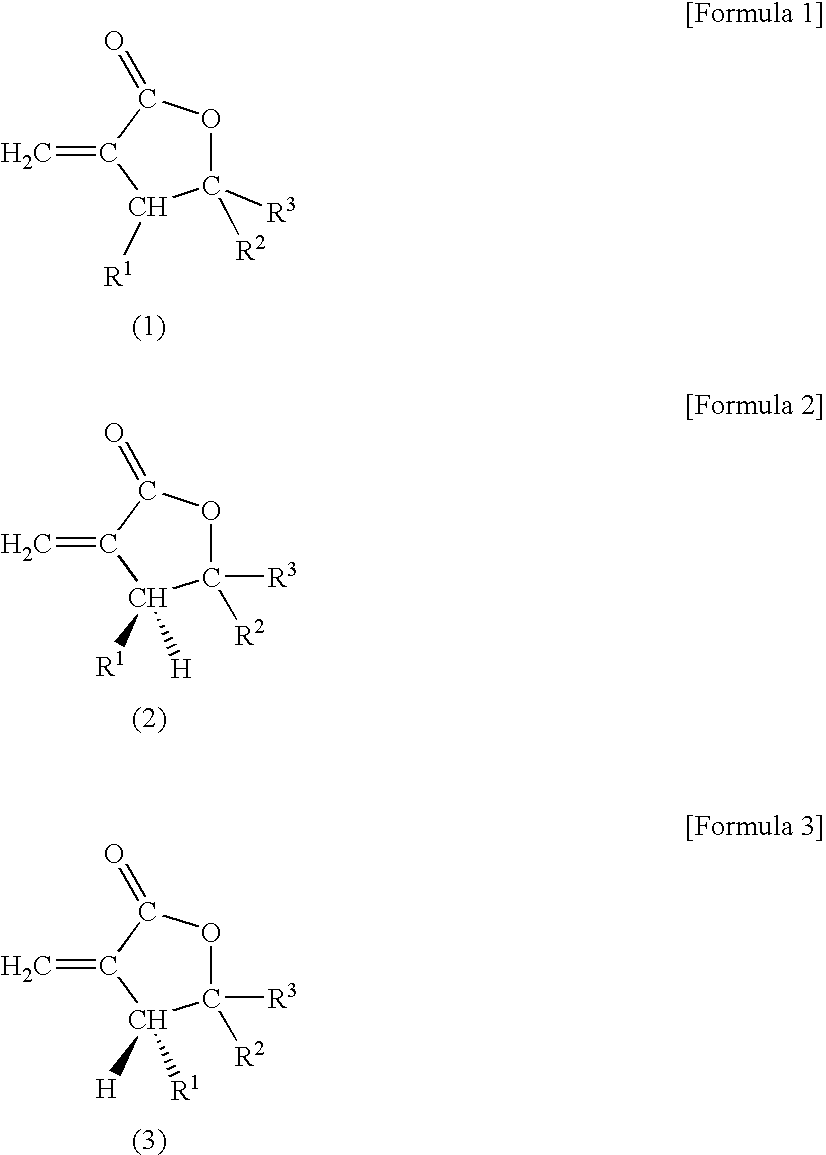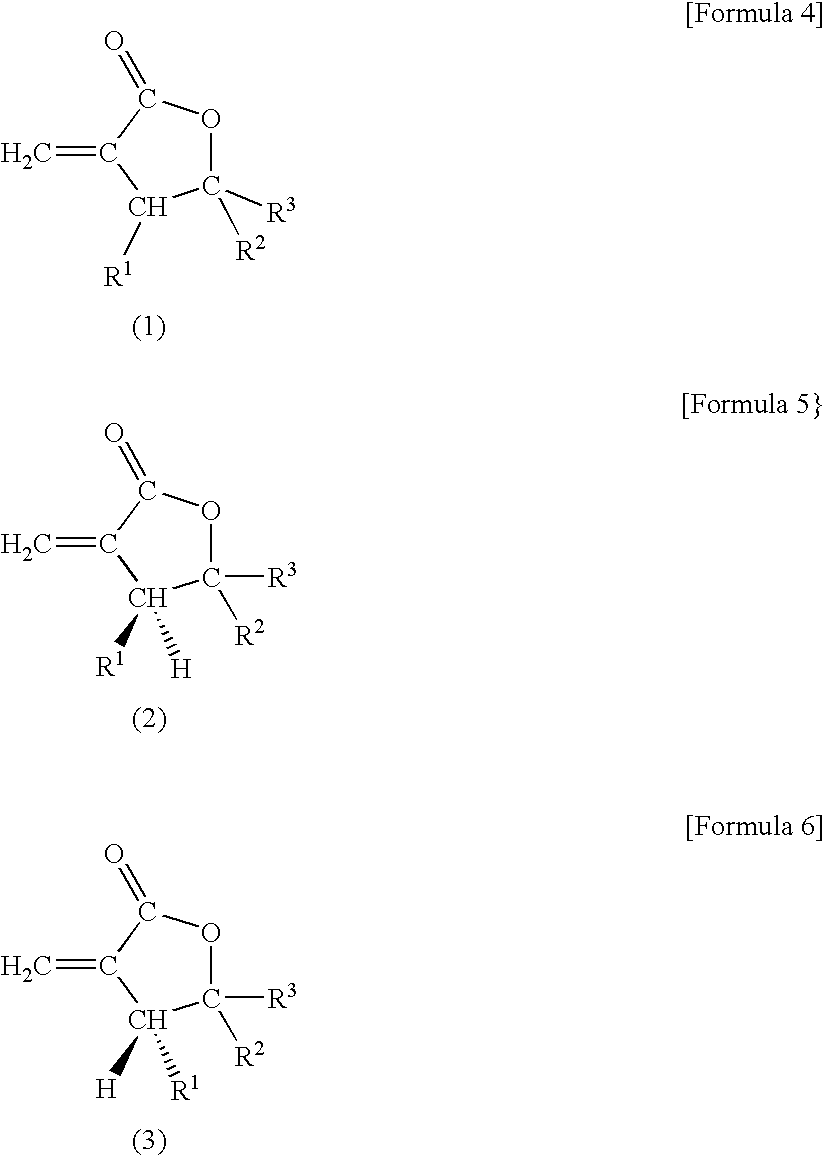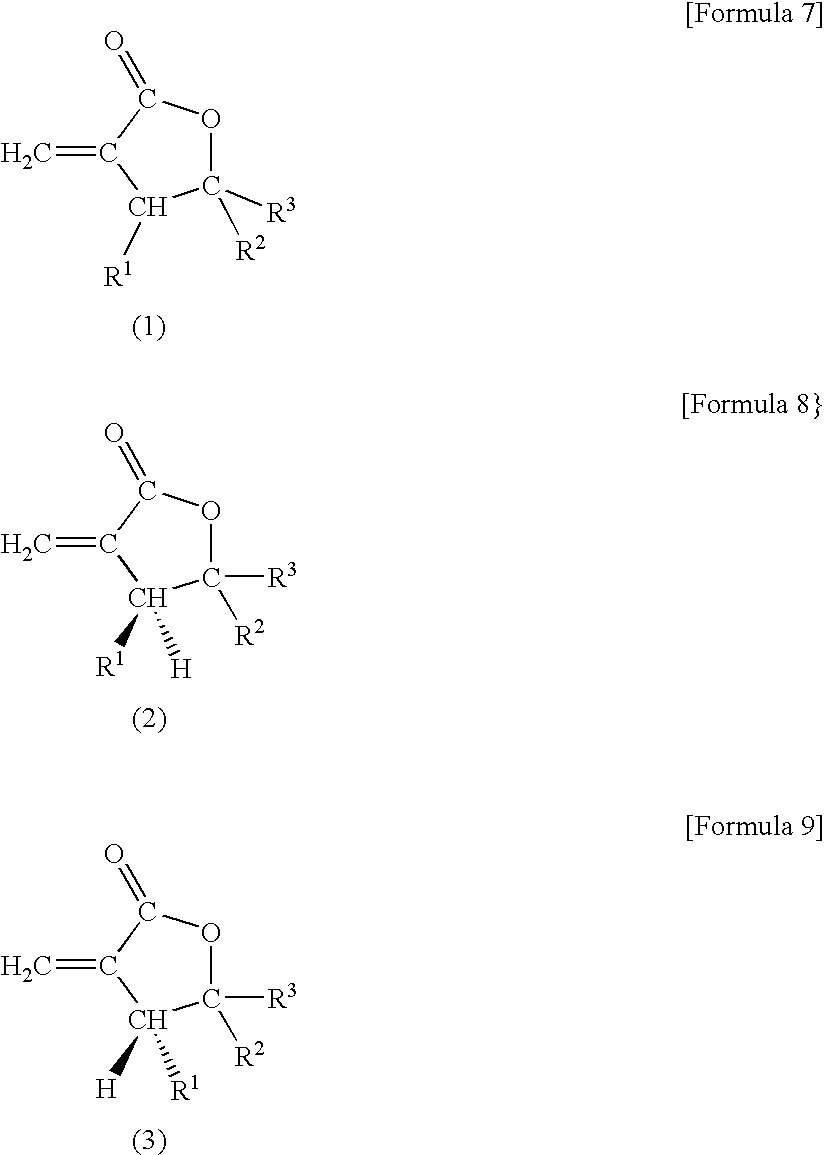Polymer Composition, Plastic Optical Fiber, Plastic Optical Fiber Cable, and Method for Manufacturing Plastic Optical Fiber
- Summary
- Abstract
- Description
- Claims
- Application Information
AI Technical Summary
Benefits of technology
Problems solved by technology
Method used
Image
Examples
exemplary embodiment 1
[0174]50 parts by mass of the (R)-βMMBL obtained in (Synthesis 7) and 50 parts by mass of the (S)-βMMBL obtained in (Synthesis 8) were combined to obtain a mixture of (R)-βMMBL and (S)-βMMBL ((R / S)-βMMBL) (h).
[0175]100 parts by mass of the (R / S)-βMMBL, 0.3 parts by mass of dimethyl 2,2′-azobis-isobutyrate (V-601) as a polymerization initiator, and 0.3 g parts by mass of n-butyl mercaptan as a chain transfer agent were placed in a beaker and stirred. This stirred and dissolved mixture was charged into a glass ampoule and dissolved oxygen was removed by repeating freezing and devolatilization five times. After that, the mixture was subjected to heat treatment at 65° C. for 12 hours in an oil bath and subsequently at 120° C. for 5 hours to complete polymerization.
[0176]The resulting bulk polymer was dissolved in methylene chloride, precipitated in methanol, filtered, washed with water and dried at 75° C. for 24 hours to obtain a polymer. After that, a twin-screw extruder (manufactured ...
exemplary embodiments 2 to 7
Comparative Examples 1 to 7
[0179]Polymerization, pelletization, preparation of test specimens, and evaluation of various items were conducted as with Exemplary Embodiment 1 except that composition of the mixture of (R)-βMMBL, (S)-βMMBL, and MMA were changed as shown in Table 1. Obtained evaluation results are summarized in Table 1.
exemplary embodiments 8 to 11
Comparative Examples 8 to 11
[0180]Polymerization, pelletization, preparation of test specimens, and evaluation of light transmittance were conducted as with Exemplary Embodiment 1 except that composition of the mixture of (R)-βMMBL, (S) -βMMBL, and MMA were changed as shown in Table 2. Obtained evaluation results are summarized in Table 2.
PUM
| Property | Measurement | Unit |
|---|---|---|
| Fraction | aaaaa | aaaaa |
| Percent by mass | aaaaa | aaaaa |
| Percent by mass | aaaaa | aaaaa |
Abstract
Description
Claims
Application Information
 Login to View More
Login to View More - R&D
- Intellectual Property
- Life Sciences
- Materials
- Tech Scout
- Unparalleled Data Quality
- Higher Quality Content
- 60% Fewer Hallucinations
Browse by: Latest US Patents, China's latest patents, Technical Efficacy Thesaurus, Application Domain, Technology Topic, Popular Technical Reports.
© 2025 PatSnap. All rights reserved.Legal|Privacy policy|Modern Slavery Act Transparency Statement|Sitemap|About US| Contact US: help@patsnap.com



